All about the Newfoundland dog breed
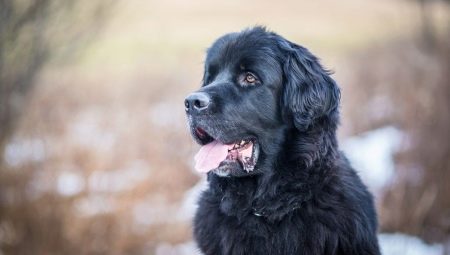
Newfoundlands are known throughout the world as the kindest and most family-owned breed of all dogs. Today, representatives of these dogs can be found quite rarely - separate kennels are located in England, North America and Russia. In this article, you will familiarize yourself with the features of the appearance, nutrition and breeding at home of Newfoundland dogs.
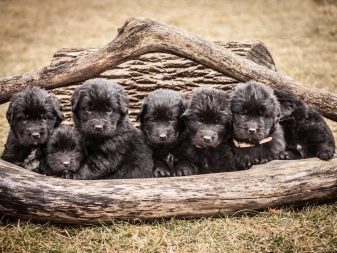
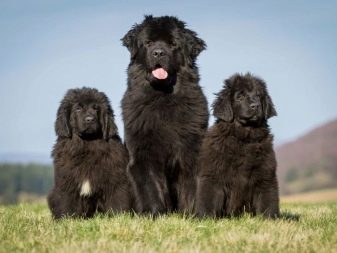
History of the breed
To date, no one knows for sure the complete pedigree of the Newfoundlands - its roots go back to the distant Middle Ages, when more than one hundred modern dog breeds were born. Despite this, there are several plausible hypotheses that partially explain their origins. The first hypothesis is inclined to believe that the direct ancestors of the Newf are the Tibetan Mastiffs, who were introduced to Europe and assimilated with local breeds.
Another hypothesis is based on the opinion that the ancestor of the Newfoundlands was the large shaggy dogs of the famous Scandinavian navigator Leif Eriksson (unofficial discoverer of North America).
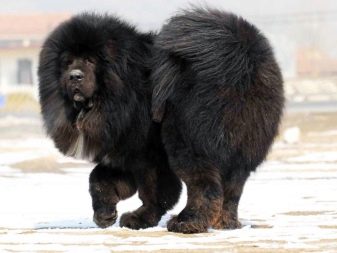
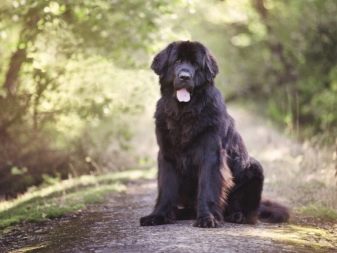
Vinland, the modern coast of the island of Newfoundland, was one of the regions that Leif discovered. It is believed that it was thanks to this region that the breed received its official name.
Before the arrival of the discoverer, there were already aboriginal settlements in these territories, who actively used dogs in hunting and labor work. These dogs were distinguished by a thick coat that repelled water and protected them from frost.The most daring researchers claim that it was these individuals who became the pioneers of the Newfoundland breed. After that, the breed has come a long way of random selection research, having absorbed data of Molossian dogs, mastiffs, black Scottish shepherds and many other breeds.
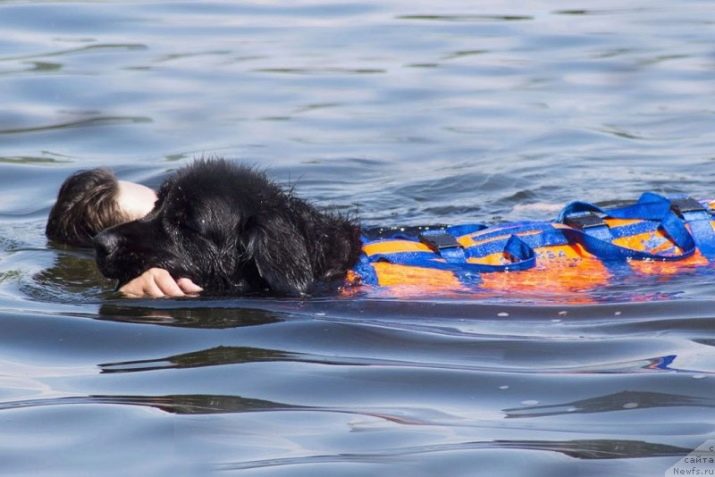
The primary reason for the popularity of these dogs was their amazing physical strength, fearlessness and dedication. These positive qualities have survived to this day. This breed of dogs received official recognition only in the first half of the 18th century. For almost 7 centuries of living together, people have learned to use this breed in fishing and hunting. Today, centuries-old records of herd books have been preserved, where it is indicated that dogs of this breed are very fond of water, help to pull out fishing nets, serve as guides and even help to carry heavy bags.
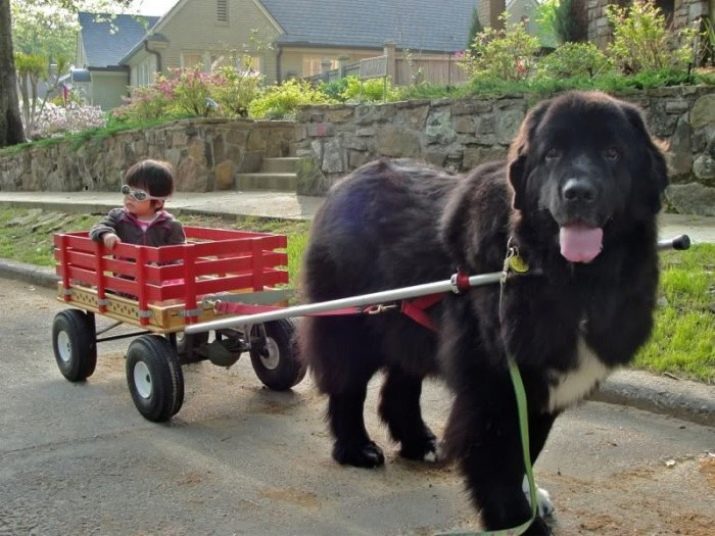
Even at that time, everyone noted the extreme poise and practicality of this breed of dog.
Dogs with such unique qualities and good-natured character soon became known in Europe. When buying Newfoundlands, dog owners were counting on a handsome but loyal family member. Active breeding and distribution of this breed was carried out in England, and then in France and Germany. The unofficial standard of the Newfoundlands assumed exclusively black and white individuals, but thanks to selection, pure black or brown individuals soon became popular.
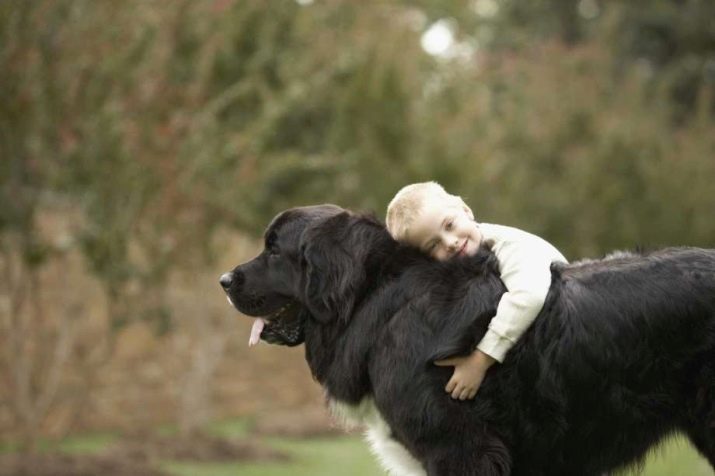
At the end of the 19th century, a fashion for large dogs with a massive appearance and a wide body came to Europe, which had an extremely positive effect on the spread of Newfoundlands. The first Newf breed club was opened only in 1886, at about the same time an official standard was adopted, the main provisions of which have been preserved to this day. The greatest popularity came to the Newfoundlands only at the beginning of the twentieth century, when they returned to their historical homeland - America. It was already a fully-fledged breed of dog with its own unique exterior and qualities.
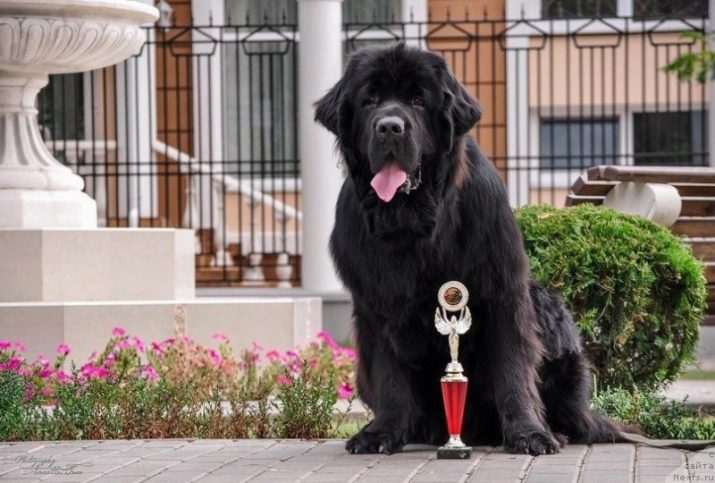
It is on the territory of America and England that today most of the kennels for breeding this breed of dogs are located.
Important! Today Newf are a fairly common breed of domestic dogs. They are often presented at international shows and competitions, and are also known by the International Cynological Federation as a calm, reliable and loyal breed.
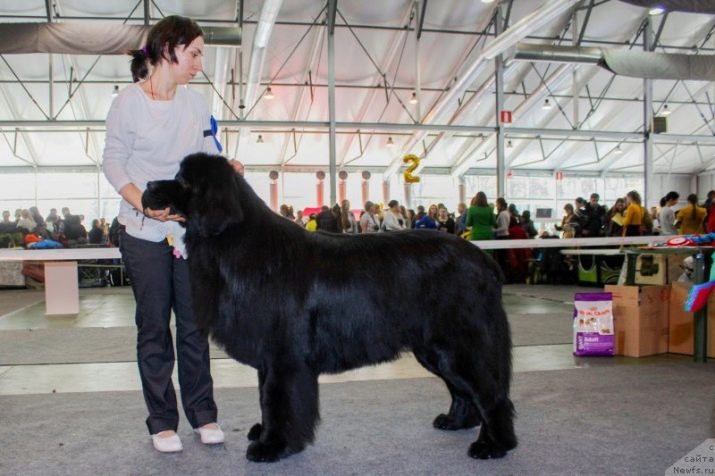
Description
Now it is worth dealing with the typical external characteristics of the Newfoundland breed, which are based on the modern standard.
- Frame. Massive, firmly built, but compact, even to some extent square: the distance between the withers and the floor is equal to the distance from the withers to the base of the tail. The back is broad, like the croup, and the musculature is well developed on the lower back. The chest is broad and well developed. As a rule, the body is more elongated in bitches than in males, and the physique itself is not so massive.
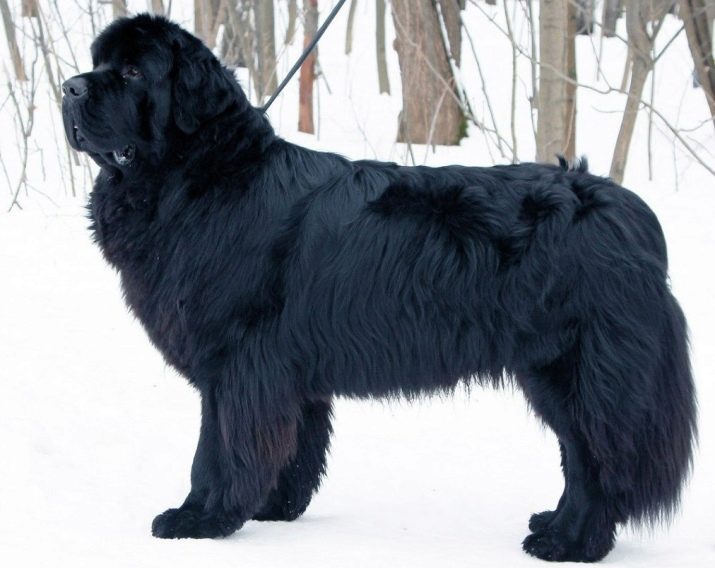
- Head... Large, weighty, the skull is wide and heavy. The occipital protuberance is clearly visible against the background of the head. The shape of the muzzle is square, short. A notable feature of the Newf is the complete absence of any skin folds on the face. The cheeks are soft, springy, with a clear angle at the beginning of the mouth. The nose is large, wide, with well-developed nostrils - the shade is usually black or brown. The entire muzzle is covered with a thin layer of hairline.
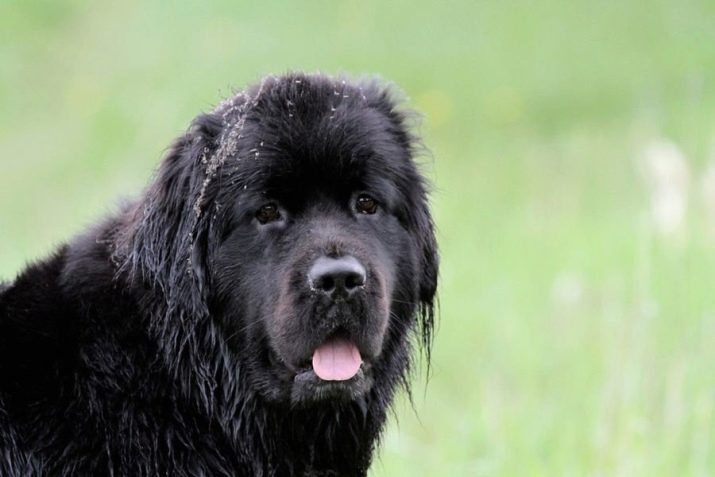
- Oral cavity and canines. The teeth are white, dull, and look massive. Canines clearly stand out against the background of the main row. The bite is most often scissor bite.
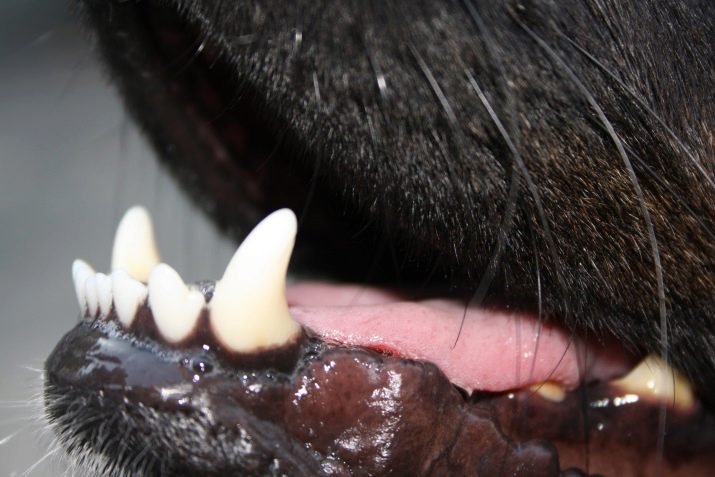
- Eyes. Small, round or almond-shaped, deep set and relatively far apart. The eyelids fit snugly against the eye. For representatives of dark colors, the iris of the eye should be dark or black.If we are talking about brown and brown individuals, then honey, copper and light brown shades are possible.
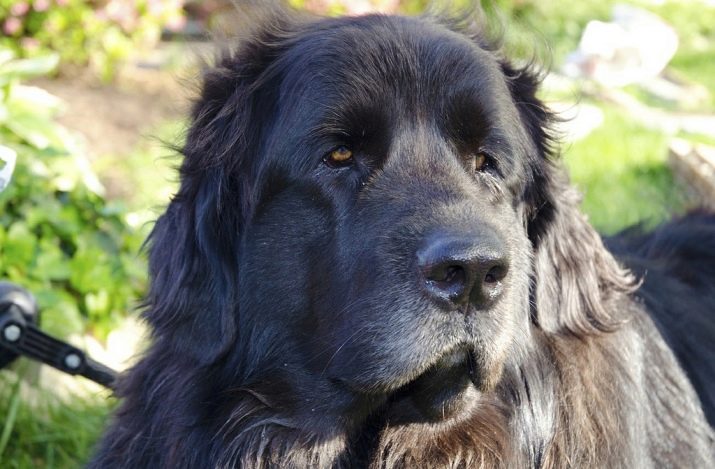
- Ears. Even at a young age, they are omitted, long and triangular in structure, the tips are rounded. They are planted laterally at the level of the brow ridges. Often covered with a middle layer of hair. To determine the correct length of the ears, it is enough to try to reach the inner corner of the eye from the identical side of the head with the tip of the ear. Purebred divers should have ear length in this area.

- Neck. Powerful, wide, rather long and flexible, which allows individuals of this breed to freely turn their heads. From the beginning of the neck to the chest, an increase in the length of the hairline can be observed, which creates a kind of "lion" image when the newf is sitting.
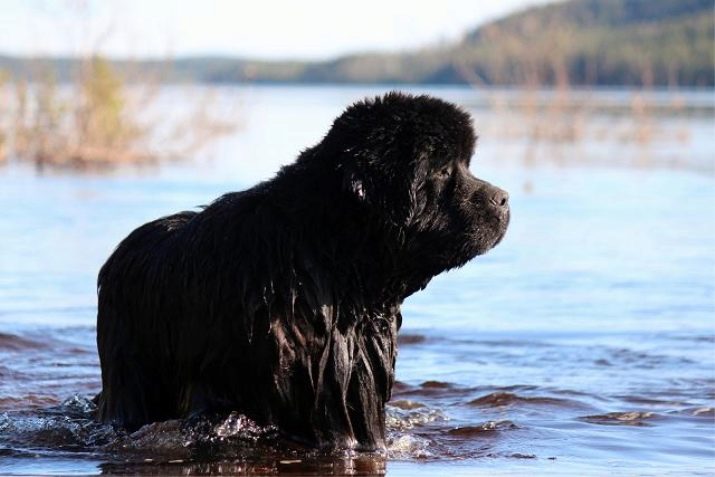
- Legs and paws. The forelegs are extremely straight, with a calm gait they step almost parallel. The hind legs have more pronounced muscles (especially the femoral muscles), but slightly less in length. The paws themselves are tightly gathered, the shape is rounded, there are small swimming membranes between the dense and hard toes. Nails are usually poorly defined, thick, black or light in color. Also, this breed is characterized by the appearance of profitable fingers that need to be removed, and the sooner the better.
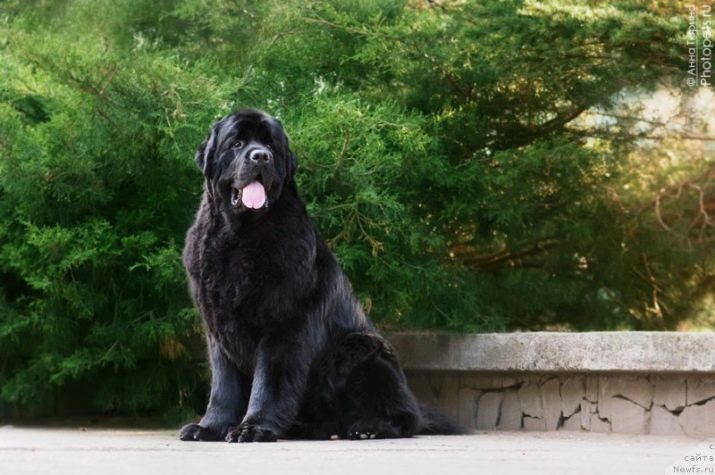
- Tail. For this breed, the tail performs a special regulating function - it sets the direction for movement in the water. It is massive, wide, covered with a thick layer of wool, which allows you to effectively manage it even in a stormy stream of water. When the dog is in a standing position, the tail is slightly lowered, but should not be between the legs or lying on the back. If the pet is in an agitated state, the tail is usually raised up and slightly curved inward.
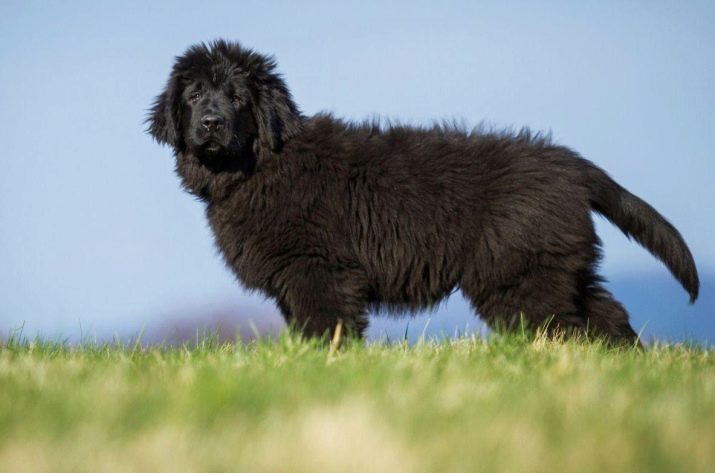
- Movement... You can also recognize Newfoundland by its graceful, measured and unhurried gait. Even in a playful or frightened state, all his movements demonstrate strength, power and inflexibility, while his back always remains level. The movements of these dogs are sweeping and wide, they prefer to take medium, unhurried steps, putting a certain strength in each step.
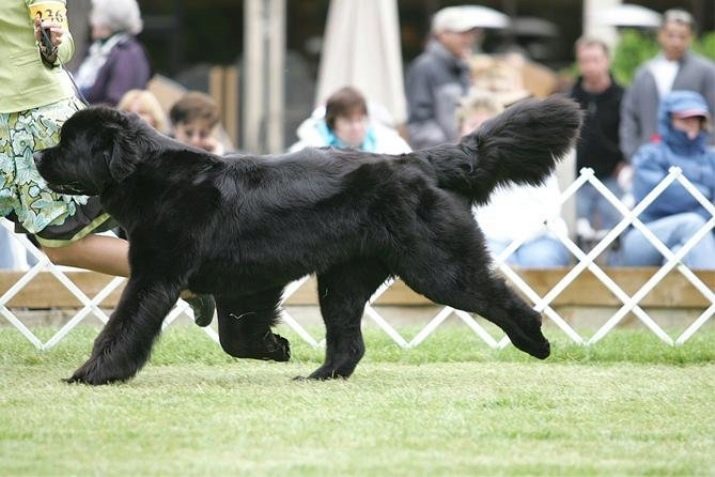
- Hair. The coat of this breed has a simply unique property that does not allow the dog to get very wet or get dirty quickly. By its structure, the hair of these dogs is oily and smooth, so the water simply flows down them, not reaching the undercoat. The hair is straight in texture, but the standard allows for small swirls at the back of the head, chest and abdomen. Wool covers the entire body of the animal, a significant part of the hair is located on the limbs, back, tail and chest. The wool itself is soft, but harsh, springy.

- Color. Initially, divers were presented only as an exclusively black or black and white dog breed, but over time and the spread of this breed around the world, chocolate individuals have also become popular. At first, it was believed that the brown color was the result of the burnout of the wool in direct sunlight, but over time, Newfes with this color were specially bred. The main requirement for a diver's color is color saturation. Despite the prevalence of one shade in the color of this breed, Newfoundlands with a zonal black and white color have recently gained popularity.
In this case, black spots on the saddle, a black head, a black spot at the base of the tail are allowed, the rest of the body should be white. It is desirable that the prevalence of a white tint is.
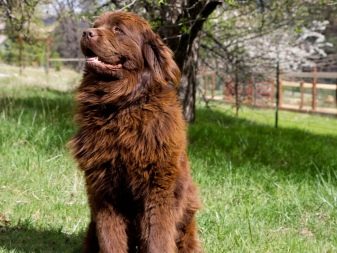
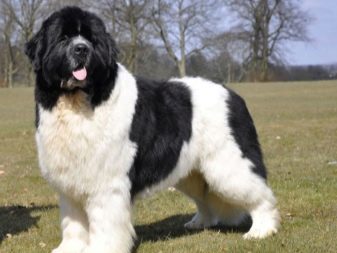
- Average weight. Newfs are distinguished by their massive and heavy constitution - if females usually do not exceed 55 kg, then males can weigh up to 70 kg.
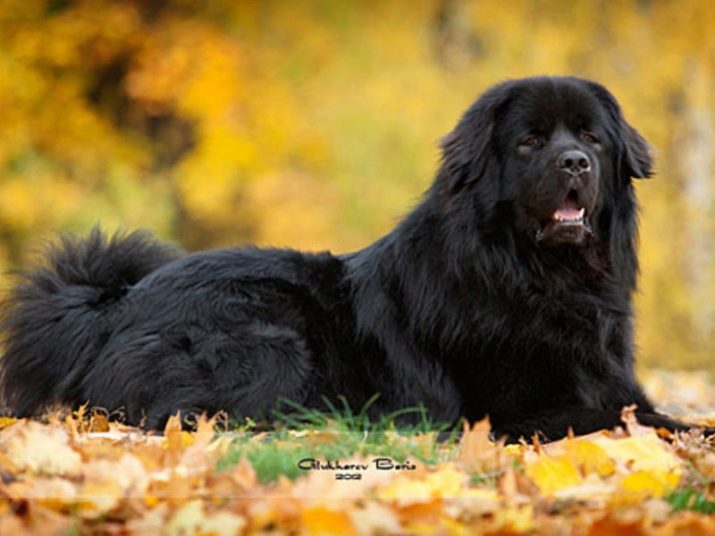
- Height. As with weight, females are slightly shorter than males. The average height of a Newf female today is 63–67 cm at the withers, the height of the cable is from 69 to 76 cm.
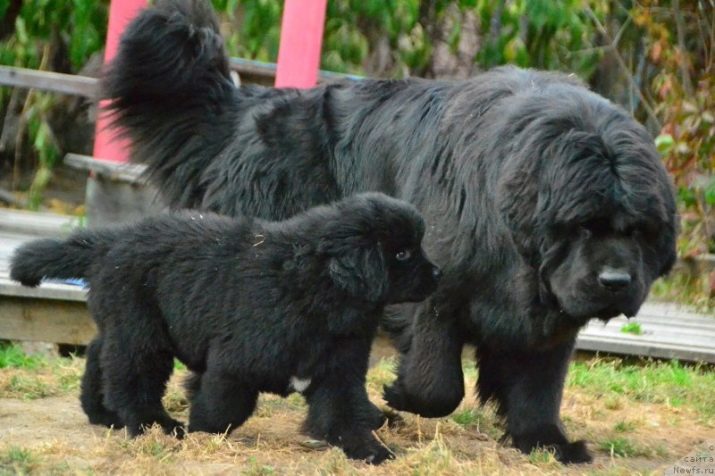
Character
This breed of dog is known to many dog handlers and breeders as the most good-natured and friendly among all the rest. It is difficult to find a dog kinder and more tactful in relation not only to the owner, but also to strangers. The apartment, where the Newfoundland appears, immediately becomes a little cozier and warmer thanks to the positive and warm aura of this kind, healthy man.
It is impossible to find someone more devoted than Newfoundland in relation to his master and family. For their sake, they are able to carry out commands, do complex tricks and even rush into a burning house to save them. An ambiguous quality here is that dogs of this breed - amazing monogamous. This means that the dog is unlikely to recognize a full-fledged owner in a new person, although it will treat him kindly.
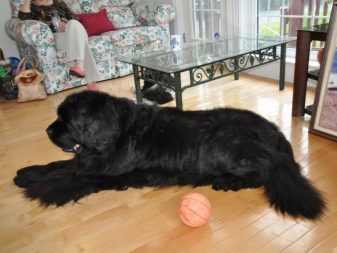
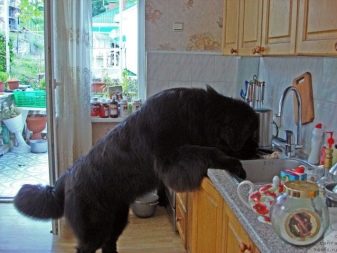
Some inexperienced breeders confuse the affection and kindness of Newfoundlands with upbringing and thoroughbredness, but these pets have a sharp mind from birth, not prone to whims and annoyance.
Despite its considerable size, dogs of this breed are very good-natured towards all family members, whether they are adults or their smallest representatives. For children, these dogs will become powerful protectors and friends who will protect them from other animals, comfort them in difficult times, and also become a pillow thanks to the long and thick Newfoundland coat. In addition, this breed tolerates molestation well and does not hold grudges against babies. Newfoundlands or "divers" are friendly not only to people, but also to pets.
As for other dog breeds - this breed will try with all its might to make contact and show its location. If we are talking about cats, then these dogs treat them with good nature, but with the understanding that friendship can hardly take place.
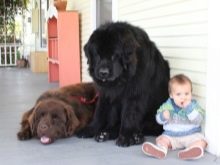
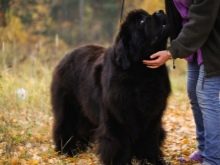

Friendship between a cat and a diver can be more practical, where one protects the other, helps with domestic pranks, or consoles.
Unfortunately or fortunately, this breed is practically unsuitable for sentry work. "Divers" are initially too friendly and trusting, even though suspicious notes may slip in the actions of a stranger, these dogs will not lose a good disposition to them until the last second.
A completely different situation when protection of the owner from an aggressive stranger is required - at such moments a big good man instantly disappears, giving way to a formidable and strong defender who is ready to break all those who threaten his family. All over the world "divers" are actively used in rescue and accompanying operations: as guides, draft force, rescuers of the wounded and drowning. These dogs perfectly understand the current situation of danger, make decisions quickly and give themselves completely to work, even at the cost of their lives.
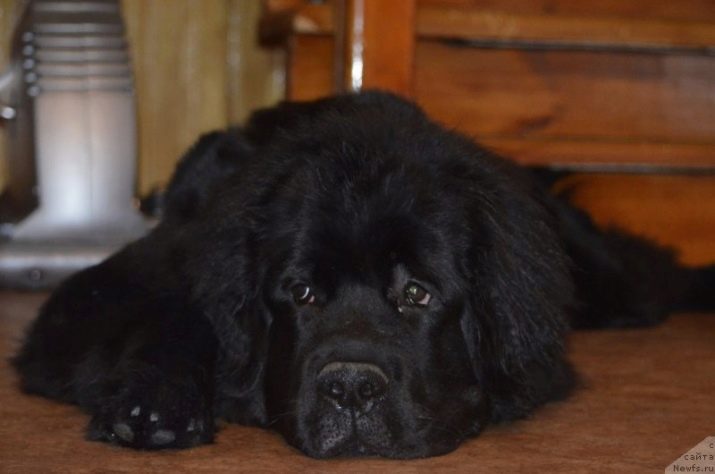
Thanks to these qualities, the Newfoundland was depicted in the painting by Edwin Henry Landseer entitled "A Dignified Member of Human Society."
Some breeders consider “divers” to be an incredibly lazy and incapable of learning breed, but this is not at all the case. The fact is that this breed has a well-developed analytical thinking, which fences off the dog from stupid and senseless, in its opinion, commands. This especially affects professional training - divers rarely show a desire to repeat the material already passed, as they consider it to be completely mastered.
A hallmark of Newfoundlands is their keen intuitive flair. These animals are able to analyze the actions of the owner and accurately determine what he wants at the moment. This is both a good side, since these dogs will never bother if you feel bad, and a bad trait, where the Newf can take your screams and aggressive statements very close to their hearts.
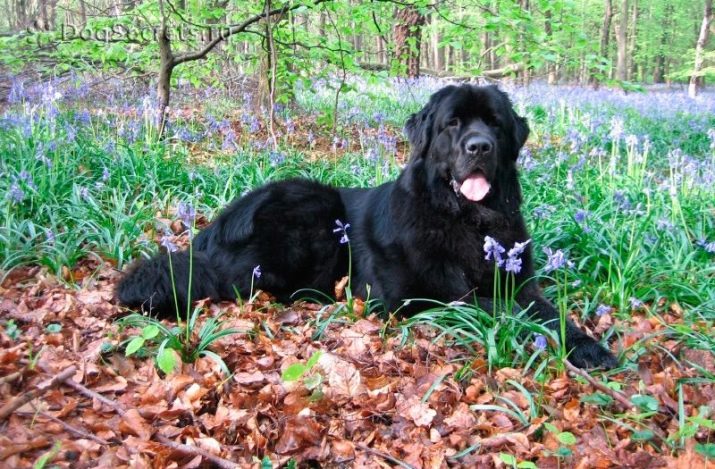
It is worth going to peace with such dogs right away, otherwise they may become depressed and withdrawn into themselves.
Newfs just feel great in nature, on the road they are docile, diligent, from traveling by car they often get real pleasure, sticking their heads out of the car window. Rest, combined with swimming in open water, brings special joy to these dogs. These dogs will be especially useful in family vacations, where they can not only have the same fun with your children, but also protect them from dangerous pranks.

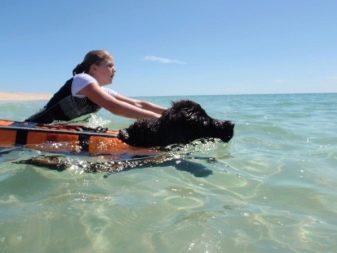
Life span
The life expectancy of any pet, be it a dog, cat, hamster or turtle, depends on several factors at once: conditions of maintenance and care, correct feeding, stable psychological relations with the owner, heredity. As for the Newf breed itself, they do not live very long - mostly from 8 to 10 years. By the age of 7–8, the animal begins to develop problems with vision and hearing, and the functions of the musculoskeletal system deteriorate.
In theoretically ideal conditions of care and maintenance, the life span of a diver can really be extended up to 14–15 years, but this is not worth counting on.
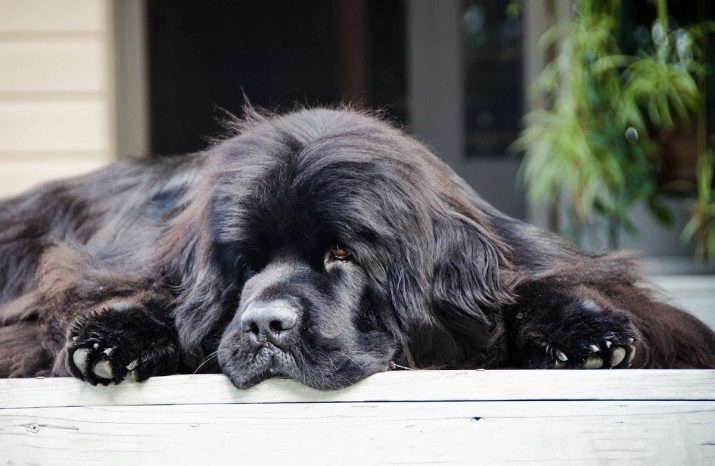
With age, these pets may also develop problems of the cardiovascular system, obesity, volvulus, dysplasia, hypothyroidism.
Breeding and raising puppies
Experienced breeders do not recommend breeding Newfoundlands at home. This is not to say that these animals need any exceptional conditions of care, but small "divers", as a rule, require an extremely balanced diet to strengthen the body. Inexperienced owners are rarely capable of such food, especially when it comes to a litter with several puppies.
If you decide in advance that the animal will not be used for breeding, it is advised to castrate the individual... It is believed that castration increases the potential lifespan of animals.
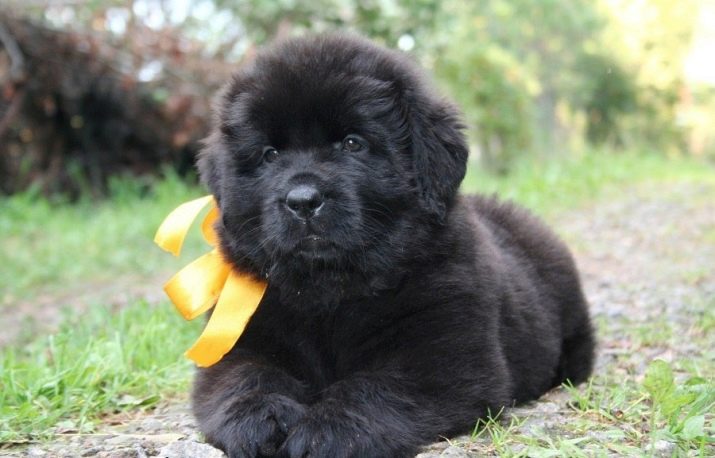
This helps to avoid prenatal stress and exhaustion during pregnancy in females.
The very first estrus in Newf females begins in the interval from six months to a year, but it is recommended to wait up to a year until the female's body is fully formed and strengthened for bearing and giving birth to puppies. That's why mating is recommended only for the second or even better third heat.
Particular attention should be paid to the protection of a female in heat from other non-pedigree males during walks. It is usually not recommended to mate a female with a male from private hands, for this you can contact in specialized nurseries, where there are purebred males raised for these purposes.
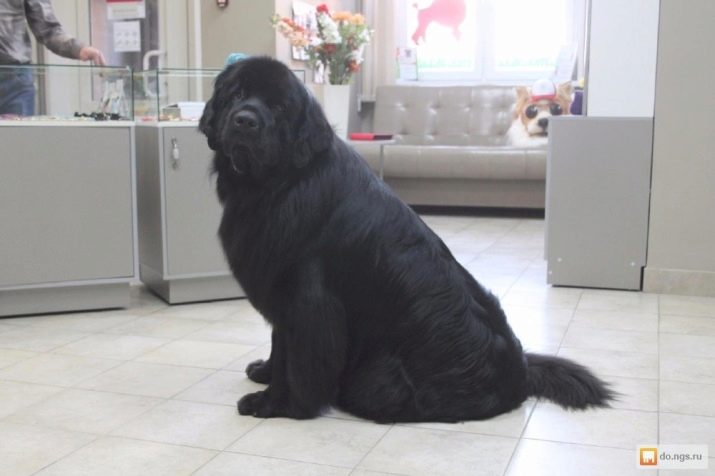
In addition, this way you can more accurately track the correctness of documents and pedigree.
Before knitting, make sure the animal is healthy. Particular attention should be paid to excess weight in females, which complicates the very process of childbirth. During pregnancy, the female will need enhanced nutrition with an increased amount of vitamins and minerals.
For the birth itself, you should choose a dry place with dim light. At birth, Newf puppies are practically defenseless, so at first it is recommended to leave them with their parents. After a few days, when the puppies are a little stronger, they should be weaned from their mother and placed in a separate room (this should only be done if you decide to sell puppies).
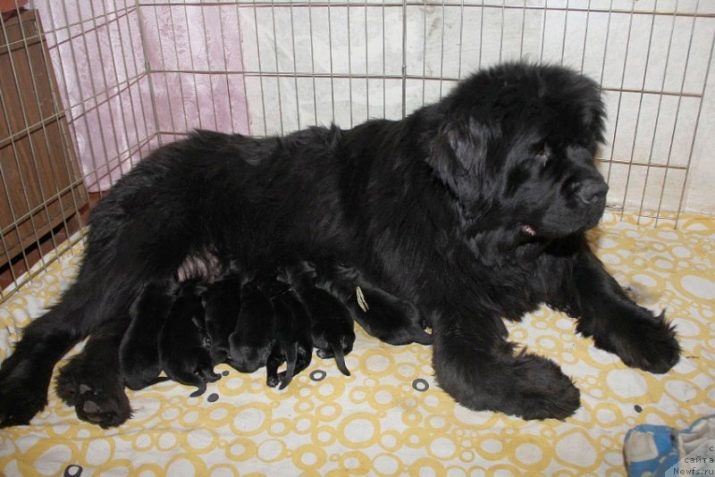
Keep in mind that the female will be under deep stress if you take all the puppies away from her.
Important! The puppies should get the first nutrients from their mother's milk, then they will have to switch to more nutritious and nutritious food, which will be discussed below. Since most of the purebred puppies are bought only at the age of 2 to 3 months, keep in mind that during these 2 months all the care for the condition of the pets will be on your shoulders.
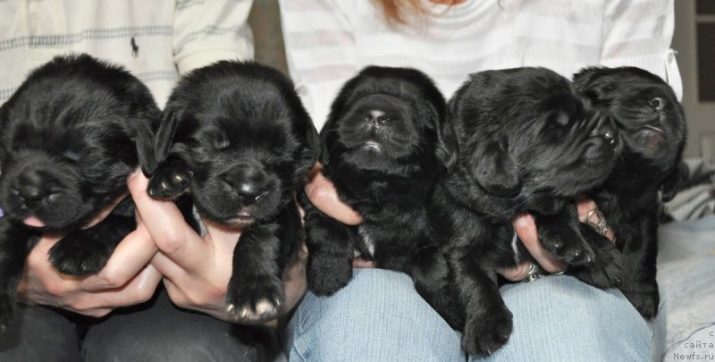
How to choose a Newfoundland puppy?
Raising puppies is a challenge even for the most experienced breeders, so many of them prefer to buy adult puppies that already know how to walk in the litter box and follow minimal commands. There are several factors to consider when buying puppies.
- Place of purchase. There are two popular options for purchasing Newf puppies - from private hands or from nurseries. Each option has its own pros and cons.
- So, in nurseries due to the large number of dogs, not much attention is paid to the individual born individual. Here the emphasis is on collective meals, general care conditions and general vaccinations. However, despite this, self-respecting kennels always keep a strict record of the pet's pedigrees. They will certainly present you with all the documents, and can also acquaint you with the documents of the pet's parents themselves - so you can get a rough idea of the appearance and inclinations of the future pet.
- Buying a pet from your hands more often it is much cheaper, but the risks are much greater here. For example, you are unlikely to receive the entire set of documents, which should include a veterinary passport, birth certificate and pedigree. And also you will not be sure of what you fed your pet before you. The guarantee of a healthy puppy in this case is only the word of honor of the puppy seller, so you must be absolutely sure of his reputation.
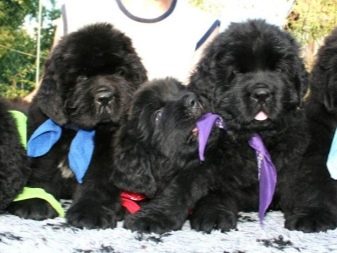
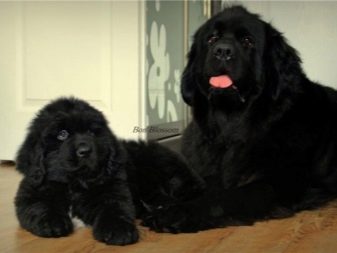
- Age. Based on the recommendations of the Russian Kennel Federation, dog puppies can only be sold upon reaching the age of 45 days. However, many people prefer to buy almost adult puppies over 3 months old. At this age, puppies are usually vaccinated, behave adequately and are ready for education and training. In addition, at this age, the dog's body is fully formed, therefore, you can immediately detect flaws or defects in appearance.
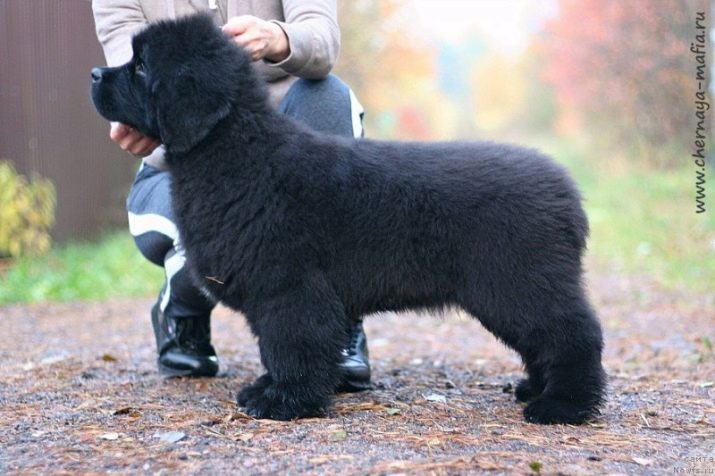
- Behavior. When choosing puppies, pay attention to their behavior. It is better to choose active, tight-knit, cheerful and inquisitive puppies. Tightness, indecision and weak interest in what is happening indicate weakness or health problems. Pay particular attention to the condition of the coat, coordination, the presence of lacrimal paths, increased salivation - all these signs indicate diseases and health complications.
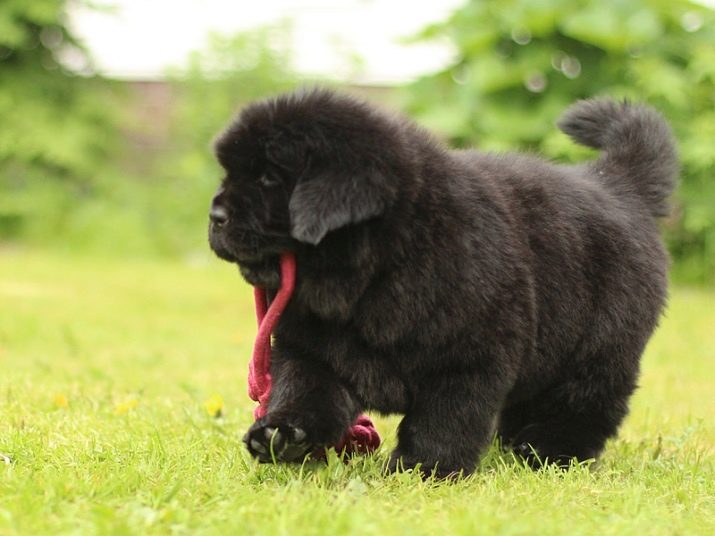
Diet
Proper feeding is especially important for the healthy functioning of "divers" - individuals of this breed do not particularly like to spend time for hard training and physical entertainment, therefore, they are prone to obesity. It is worth familiarizing yourself with the basic rules of feeding Newfoundlands.
- Ready-made feed. Only premium and super-premium food (holistic) is suitable for feeding Newf, only they contain all the vitamins and minerals necessary for a dog. Such nutrition will require some ingenuity from you, since the same food can simply get bored with Newfam over time. That is why you should sometimes add treats, fruits and vegetables to your diet to brighten up your daily meal.
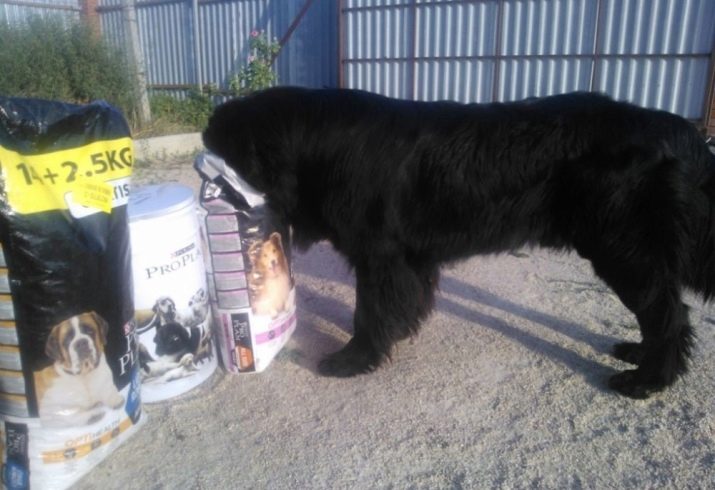
- Natural food... If we are talking about natural nutrition, then it should only be fresh and high-quality products. In the diet of these dogs, about 50% of all food should be meat products. Low-fat meat products are best suited here: lamb, veal, beef, rabbit. The rest of the diet is occupied by vegetables and fruits: carrots, apples, beets, cabbage, parsley, lettuce. In the winter period of a lack of vitamins, it is recommended to include cereals in the feed - oatmeal and buckwheat (in addition to rice, millet and pearl barley). As a substitute for meat, by-products or fish can be used - mostly boiled.
Fermented milk products such as cottage cheese or cheese can be used as an irregular supplement.

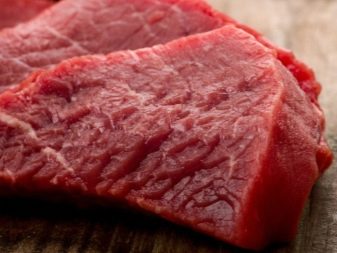

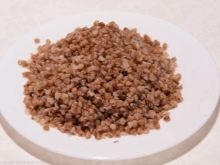
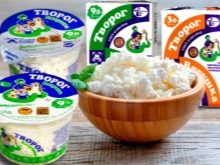
- Prohibited foods. Many inexperienced owners prefer to feed their pets with scraps from the table, which is a disservice for the dogs. The fact is that any fried, salted, pickled, smoked and spicy products are not perceived by the body of "divers" at all. The same goes for serving sweets (sweets, chocolate, cakes) and flour (except bread croutons). From fruits and vegetables, foods with a high level of acidity and high sugar should be avoided: avocados, bananas, lemons, onions.

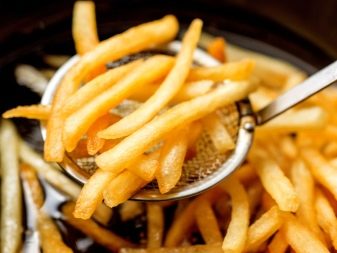


- Regularity of feeding. At birth, Newf puppies should be fed at least 5-6 times a day in small portions. Over time, the regularity of feeding decreases to twice a day.
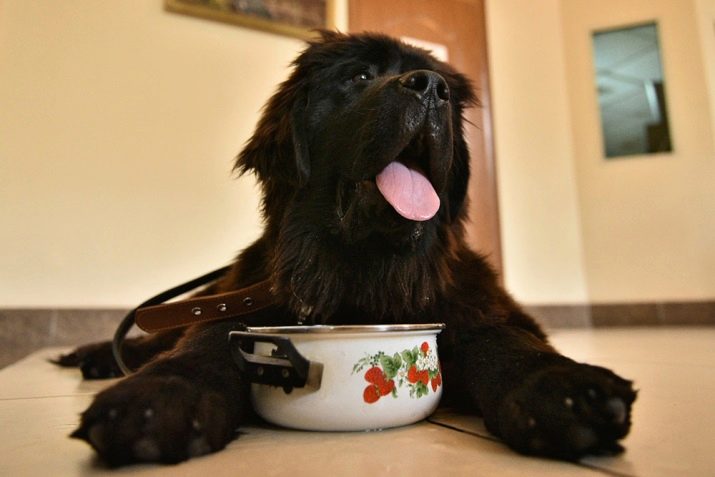
- Feeding time... An adult needs two meals a day, as well as at least two walks a day. It is best to feed the "divers" just before the morning and before the evening walk - in this case, they are more likely to whet their appetite and be able to eat even the most tasteless, but wholesome food.

- Seasonality... Every dog breed needs a different feeding approach at different seasons. During the summer season, it should be dense, satisfying and nutritious food that will provide the dog with energy for playing and walking. Low fat foods are permissible here, since they are automatically burned out by vigorous exercise. If we talk about the winter season, then the amount of fatty foods should be minimized and more vitamins and minerals should be included in the diet. Without this, it will be difficult for the dog's body to cope with the impending frost (especially for those owners who keep the dog in the northern regions or in the booth).

- Water is the most important element of any feeding. Make sure that clean and fresh water is always available to your pet. The presence of water in the supply of ready-made dry food and mixtures is especially important.
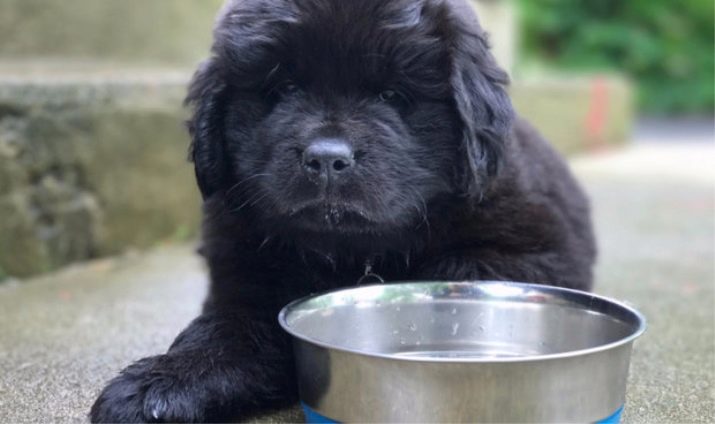
The nutrition of a young Newfoundland is slightly different from that of an adult, so it is worth considering its features.
- The main rule for breeders of "divers" is to ensure that the puppies have enough protein and animal fats in the first months. Upon reaching six months, sometimes even earlier, the diet gradually changes in favor of reducing calories and controlling the healthy tone of the animal.
- If you are buying a young puppy from a nursery or from private hands, be sure to ask what exactly the animal was fed before you. If you have been feeding natural food, and you provide the puppy with only ready-made food, be sure that an upset stomach cannot be avoided. The transition should be carried out smoothly, gradually reducing the percentage of junk food in the diet.
- For the body of young Newfs vitamins are vital, which are found in fruits and vegetables such as apples, zucchini, beets, carrots, pumpkin, potatoes. In this case, vegetables can be given both raw washed and boiled.
- From meat products it is better to give preference to veal, beef and chicken. Sea fish (without small bones) can also be used as a substitute. Quail eggs and offal are excellent substitutes for protein.


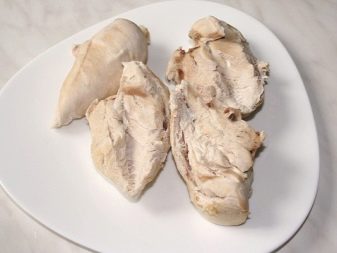
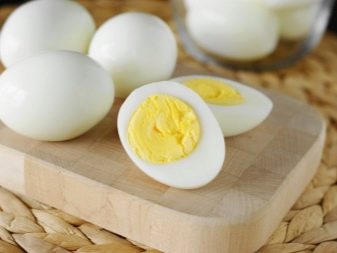
Features of care and the necessary equipment
When looking to buy a Newfoundland, it is worth considering whether your environment is suitable for keeping this unusual breed of dog.
Place of residence
Below you should familiarize yourself with a set of recommendations that should simplify the care of the "diver".
By their nature, Newfies are absolutely picky about their place of residence and feel great both on the street and at home. However, here you should pay attention to the size of the dog - such a dog is not suitable for small and small apartments with insufficient free space.
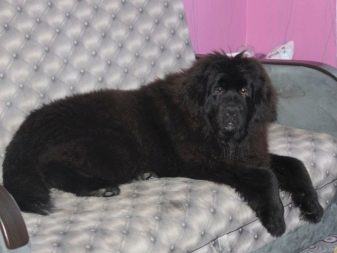
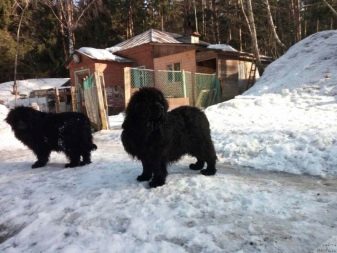
A country or private house with a booth and constant access to a small pond and an open area with greenery is best suited for keeping Newfa. If you decide to start a "diver" at home, then he should always have his own separate place with a good view of the whole apartment. The ideal option would be a small mattress or lounger covered with a cloth or cloth that is easy to wash.
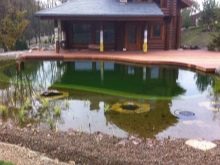
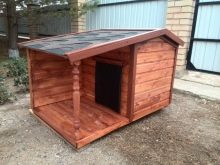
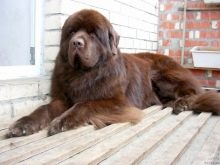
Keeping these dogs in an aviary should be discarded. - they cannot stand long partings with the owner and constantly need to communicate with people. And also it is not recommended to put "divers" on a chain - they are very individual animals with a developed sense of self-esteem. If they do not feel like a full-fledged person in the eyes of the owner, then they can forget about any trust.
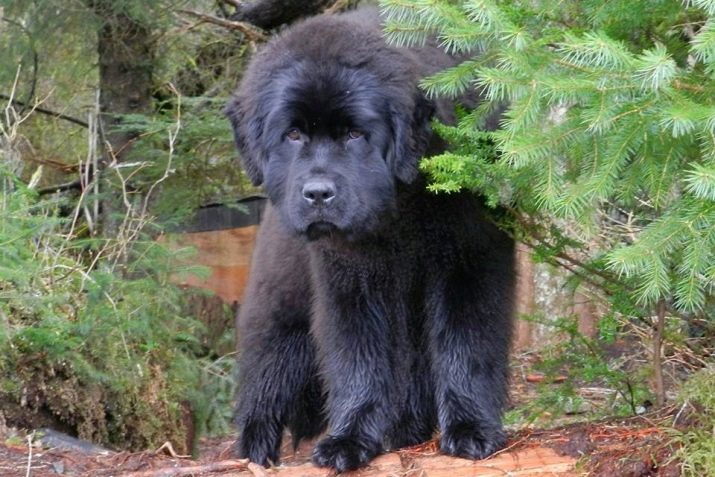
Activity
Newf can hardly be called dogs that are prone to active pastime. Most of their time, they like to just wallow in their place or follow their family members with their tail. That's why for this breed, physical activity is so necessary - with a healthy diet, but without stress, the Newfy can very easily earn obesity.
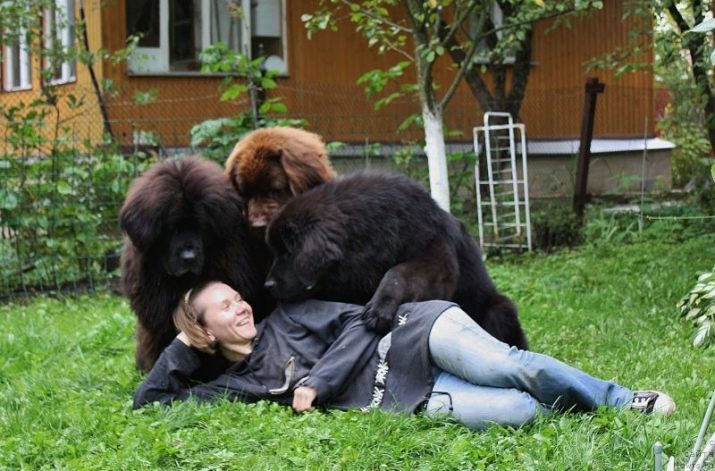
It is worth walking such dogs daily, at least 2 times a day.
Geography of distribution
As already mentioned, the likely relatives of the Newfoundlands are long-haired dog breeds that grew up in the harsh climatic conditions of a lack of warmth. That is why it is not recommended to keep these animals in hot southern regions with high average temperatures - in summer, individuals of this breed can get heatstroke from prolonged exposure to the sun.
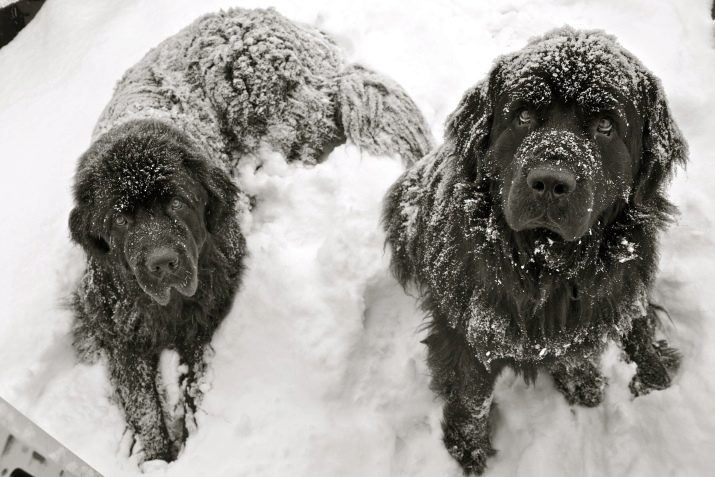
Hair care
This will become your main concern in the care of your "diver". Be prepared that in all corners of your apartment, on all clothes and furniture, there will always be scraps of wool. Especially from this misfortune you will have to suffer during periods of molting, which takes place twice a year (in autumn and spring). You can fight this only by regular combing 2-3 times a week.
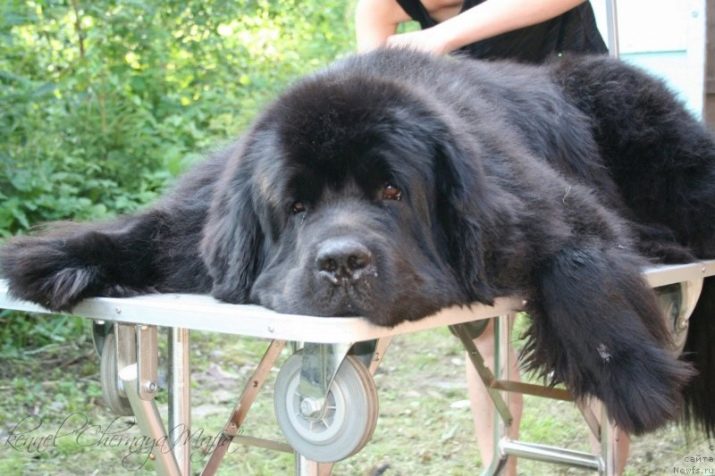
If the animal lives in the open air, you can say goodbye to shedding problems, but this does not mean that hair care procedures should be canceled. Regular brushing is the key to a beautiful and healthy appearance for divers. Particular attention should be paid to the formation of tangles, who are the real carriers of diseases.
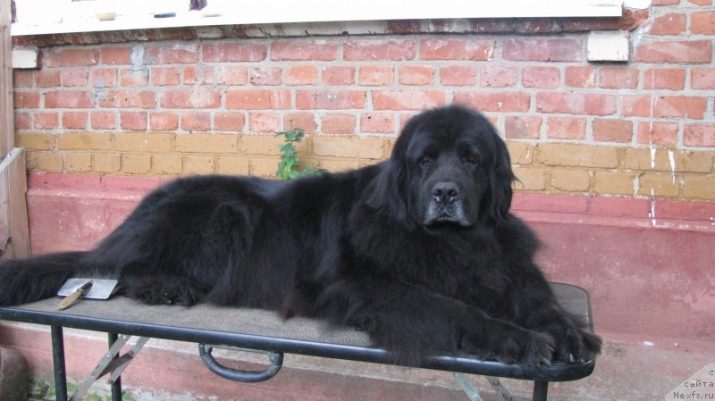
Despite the animal's affection for water, it is worth washing such dogs on your own with shampoos and other means no more than several times a year... Otherwise, there is a great chance to harm the fat balance of the skin, which will lead to allergies, infections and viral diseases. In addition, Newf wool has a unique coating that repels dirt and water, but this coating can fade over time due to the use of harsh detergents.

Some owners choose to trim long Newfoundland coats to avoid shedding and grooming. If the haircut comes out too short, it can cause significant damage to the skin of the animal and make it defenseless against colds and infectious diseases. Experienced breeders recommend rejecting these dogs. for regular sessions in grooming salons - there you can correct the pet's appearance without touching the undercoat.
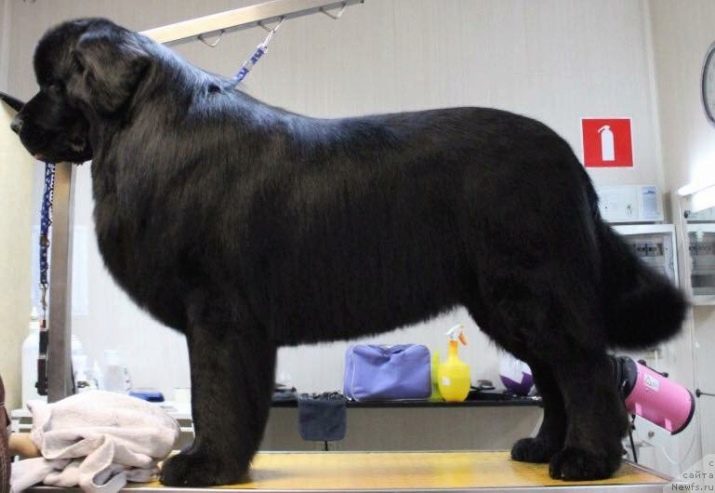
Hygiene procedures
Like all dogs, Newfoundlands need systematic grooming. behind ears, eyes, claws and teeth. A preventive examination of these areas should be carried out at least 1 time per week. Claws should be trimmed only if they interfere with the pet's movement. It is better to wash your teeth regularly to avoid plaque formation.
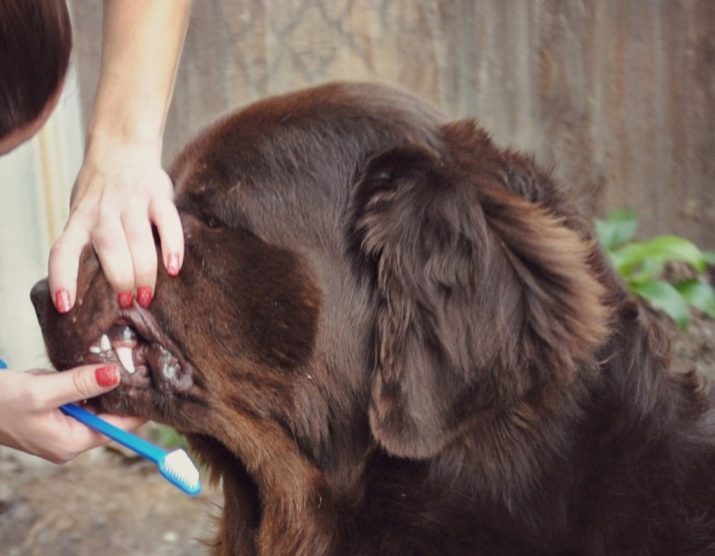
When examining the eyes and ears, pay attention to the presence of discharge of pus or mucus - this way you can learn about the development of many diseases.
Do not forget about regular vaccinations, to protect your pet from many diseases and viruses.

To care for your Newfoundland, you will need the following list of accessories:
- a comb or brush with frequent and soft teeth for combing out tangles and massage;
- nail clipper;
- brush and toothpaste for large dogs;
- cotton swabs or sticks to clean your ears;
- muzzle, collar and leash for walking the dog;
- whistle - makes it easier to perform quick tricks and commands on the street;
- 2 metal bowls - one for food, the other for water; it is advisable to screw the bowls to the floor or buy heavy and massive options that are difficult to turn over;
- toys and entertainment - they will be needed for the development of young puppies; in addition, it is advisable to buy a few bones for still very young individuals - so that they can grind down the teeth that are being cut.
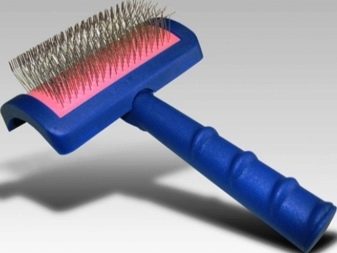
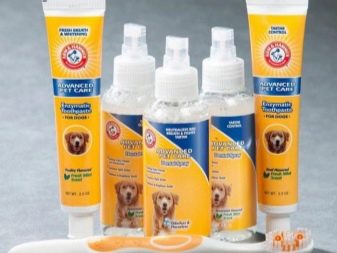
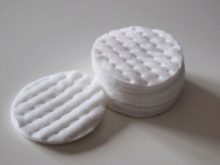

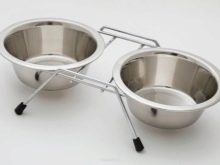
Education and training
Newfoundlands are smart, resourceful and calm, so teaching such pets basic commands does not cause significant problems even at home. There are a few things to pay attention to when training a “diver”.
- Appointment... First, decide what exactly you need a pet for and what function it will perform in the future. The fact is that the training plan for raising a lifeguard and an ordinary pet will be significantly different. However, whatever your dog goals, keep in mind that this breed needs regular exercise.
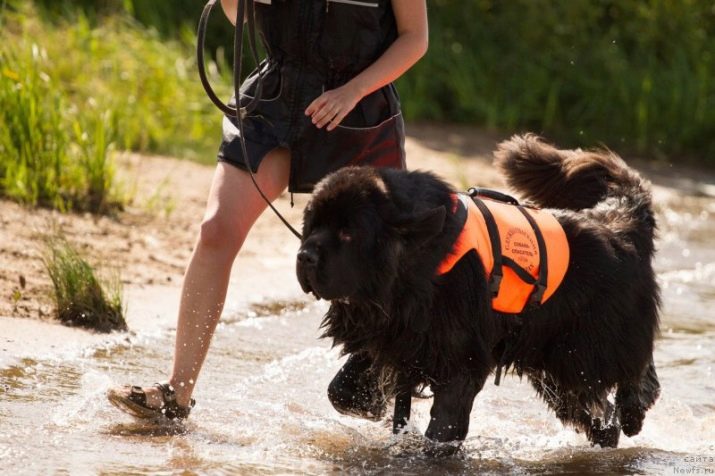
- The very first days. You should understand that education and training involves not only the execution of some commands, but also banal obedience within the walls of an apartment. That is why the basic rules of pet behavior should be taught from childhood. It is worth immediately identifying the closed and open spaces in your apartment. If a pet wants to get into a closed area, take it back with a warning until it realizes that it is impossible to go there.

- Nickname... The name for any living creature is a kind of emotional guide, and especially for pets. The nickname should be thought out in advance - it should be a loud, as short and sonorous name as possible, easy to remember. In the future, when pronouncing any commands, always use the name first - it will make it clear to the dog that the next instructions concern him.
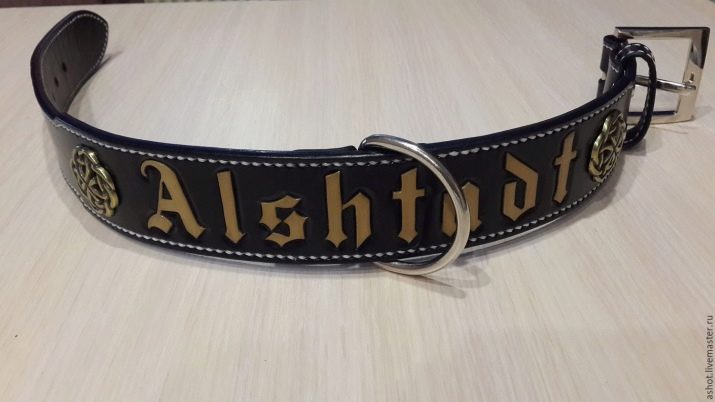
- Socialization. In the early stages of training, you should take care of the socialization of your animal. In the future, you will have to walk with him more than once in public places, in the presence of children and strangers, so the sooner your pet learns to adequately respond to the presence of strangers around, the better it will be for him. To socialize more effectively, try to take your pet with you for a walk more often.
Very soon, he will learn to recognize your manners, emotions and facial expressions in certain situations - this will be very useful at the time of the training itself. And also you may have difficulty with the eternal desire of the Newf to get to know and be friends with everyone. To some passers-by, even a diver's puppy may seem like a large-sized dog.

From birth, accustom your pet to the command, which means that you cannot approach someone or something.
- Memory. These animals simply have a wonderful memory, so a Newf pet is more likely to successfully repeat some trick or command if the owner has already forced him to do it at least once. This is also a disadvantage, since Newfathers often refuse to carry out the material already covered.
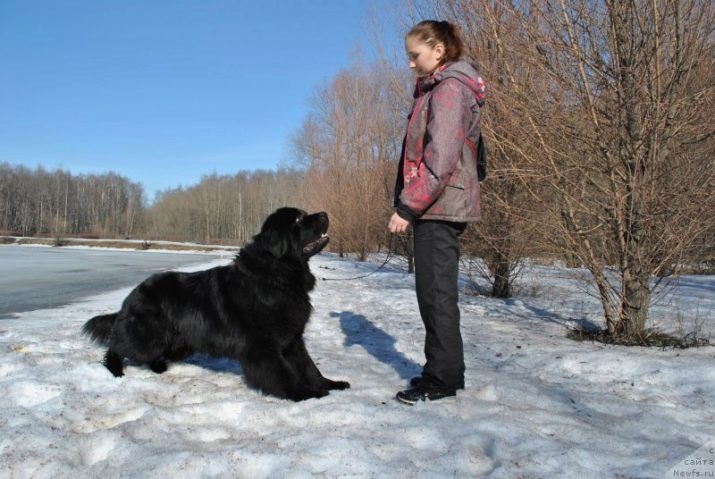
- Demeanor... In training with Newfoundland, try to maintain a neutral tone of voice, no aggression should be present there. If your pet performs some commands incorrectly, try to show it with the help of intonation. If the trick is successful, decorate your voice with a tone of approval. Believe me, this breed of dog understands perfectly when something is said with approval, but something with anger and irritation.
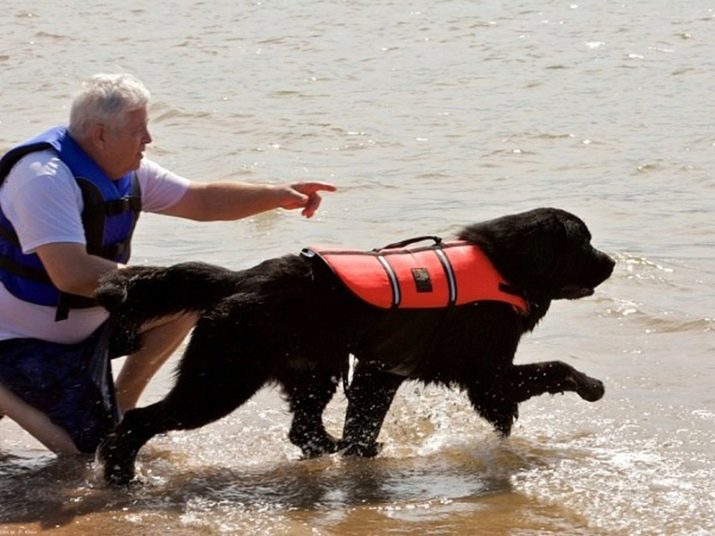
- Training time. Try to train regularly, without missing a single day in your schedule.Only in this case can the result be seriously fixed in the memory of the animal. The very first trainings should be carried out starting from 2–3 months - at this age, the Newfies become fully conscious animals and are ready to carry out the simplest commands and assignments.
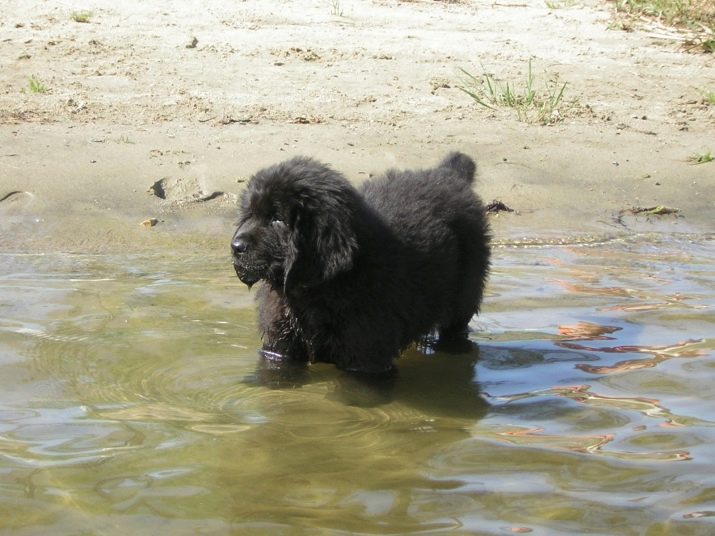
If up to six months of training can take up to 15–20 minutes a day, then as the dog matures, they can be increased to 1 hour.
- We start small. The desire to quickly train your pet to perform the most complex commands is quite understandable, but the expected result will never bring. Try to start with primitive and simple commands that do not require much effort from the pet: "sit", "paw", "fu", "voice", "place", "lie down". These commands represent a single action that can be repeated easily. Over time, these commands will have to be complicated if you want to achieve at least some result. The next step in training will be adding commands of multiple or continuous action: "next", "aport", "up", "wait" and others.
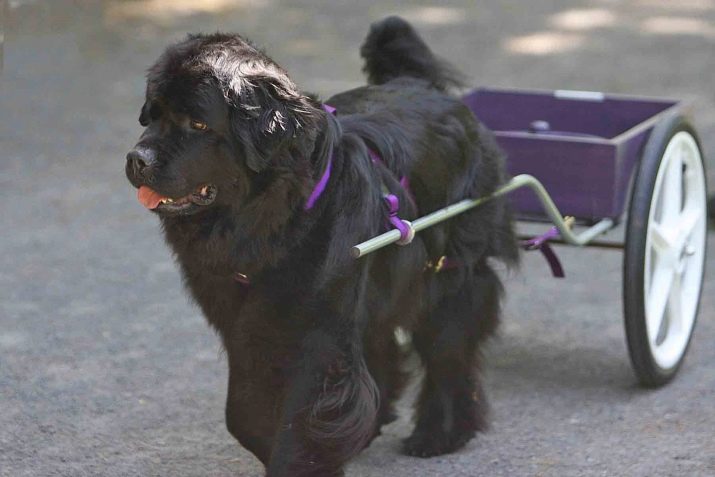
Owner reviews

For the peculiarities of keeping Newfoundland dogs, see below.






































